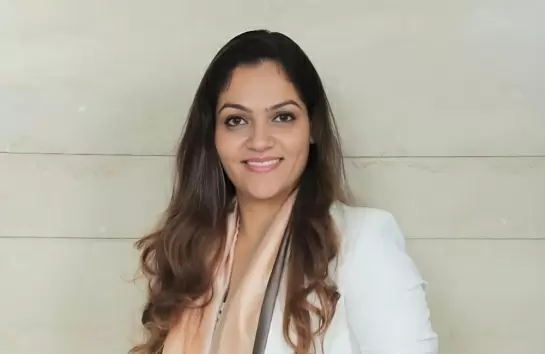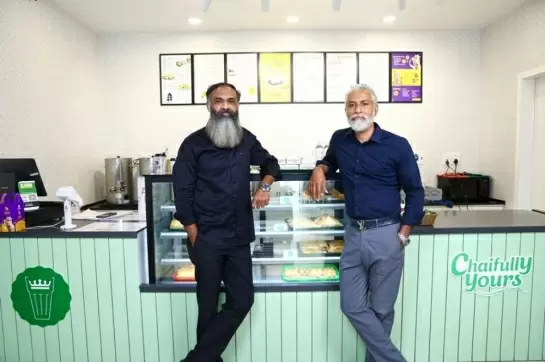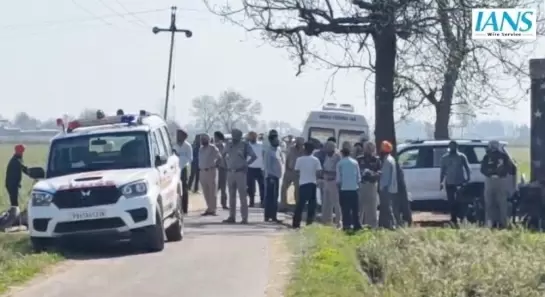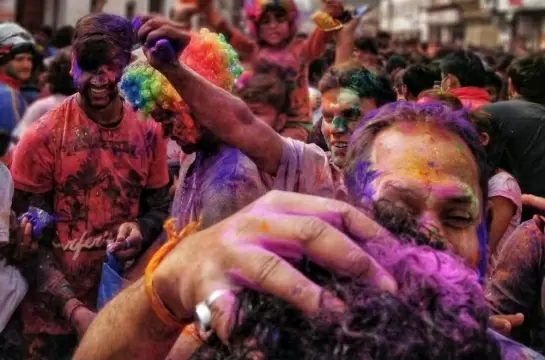Fortify urban hotspots to protect children in the third wave
New Delhi
09-July-2021
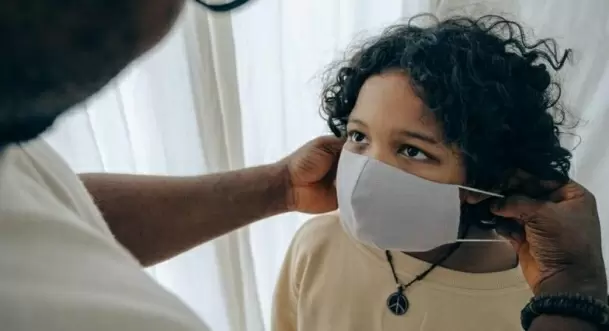
Photo: IANS
Sixteen-year-old Priyanka Rauth, along with her parents and grandmother, live in a one-room shelter in one of the most crowded slums of Kolkata. The family shares a community toilet with 12-13 other families in the neighbourhood. When her mother, the only earning member in the family, tested Covid-19 positive, she was unable to isolate herself completely in her 6 by 7 ft. shanty. The family was forced to fight the virus in their claustrophobic living conditions. Priyanka's story is not an isolated case as thousands living in urban hotspots continue to play catch-me-if-you-can with the Covid-19 virus.
Since the beginning of the pandemic, urban areas have been hotspots, both globally and in India. In the past four to five months, the immediate peri-urban areas and rural hinterland surrounding these urban hotspots have also begun reporting infected cases. India currently ranks second among the top five countries with the highest active Covid-19 cases. With 20,26,092 active cases (as of May 31), the virus has affected the adult population aged 30 to 45 years more in the second wave when compared to the first wave. But epidemiologists and public health experts fear that a third wave might affect children more severely.
To beat the surge in cases, many states have gone into lockdown with varying degrees of restrictions. Towards the end of last year and beginning of this year, the infection rate slowed down and that led to complacency towards following the Covid-19 prevention protocols. As a result, while the urban hotspots continued to be the hotspots in the lethal second wave, they also led to a spread of infections in their surrounding rural hinterland due to the sudden opening up of the economic activities and removal of travel restrictions.
Safeguarding the Hotspots
Maharashtra, Karnataka, Kerala, Tamil Nadu, Andhra Pradesh, Delhi NCT and West Bengal are the top seven states with high prevalence of Covid-19 cases. (Table 1). These seven high-burden Covid-19 states account for 48.6 per cent of the total urban children population in the country.
Table 1: Covid-19 confirmed cases, level of urbanisation and urban children (0-18) in 7 states
Watch This TWL Video
The state capital of these seven states, Mumbai, Bengaluru, Thiruvananthapuram, Chennai, Hyderabad, Delhi, and Kolkata, are the main urban centres in their states and respective region/hinterland too. These state capitals house international airports and have a high footfall of domestic and international travellers. They are also important business centres for their surrounding peri-urban areas and rural hinterlands.
Whether big or small cities or towns, the urban and rural economy thrive on each other. As a result, the marketplaces in these urban hotspots are focal points for huge socializing with people gathering and migrating for work, selling their produce or getting essential services. As the states start easing lockdown restrictions, it becomes important to safeguard the urban centres as a lot of these children belong to informal settlements and their vulnerabilities are further exacerbated due to Covid-19 induced food and livelihood crisis.
It is critical that these highly Covid-19 affected states, especially their capitals, and other cities (like Malappuram Urban Agglomeration, Pune, Mysore, Cochin, Thane, Nagpur etc) be prioritised for Covid-19 containment measures for pre-emptive and preventive action towards reducing the impact of third wave on children and other non-infected population.
Augmenting Healthcare Infrastructure & Reinforcing Preventive Protocols
In Mumbai, when the cases were surging a few months back, the Brihanmumbai Municipal Corporation (BMC) decided to decentralise its disaster control room and divide it into 24 Covid response war rooms. Each war room came with a dedicated helpline connected to 30 lines. These helplines were operated by a team of doctors, medical interns, school teachers, and social workers who were working in eight-hour shifts to keep the helplines active 24/7. This became the 'Mumbai Model' drawing praise from the Supreme Court and the Bombay High Court.
The Mumbai model, formation of Covid-19 paediatric task force (Maharashtra, Delhi NCT), auto ambulances in Kochi, monitoring Covid-19 integrated command and control centre by Varanasi, Pimpri-Chinchwad, Seva Ahaar initiative of Hyderabad Police -- studying these state initiatives will help in planning, preparation and fight towards the third wave, along with the implementation of a few other measures and checks.
* Travel (air, road, sea, and rail) in these urban centres should be restricted. All the transport terminals (bus, airport, ports, and railway stations) must be disinfected regularly and screening of passengers should be prioritized for Covid-19 symptoms.
* Urban local bodies have shown remarkable resilience and they have to continue to make sure that their cities are well-resourced and are providing basic services, including food, shelter, etc. to the vulnerable population jointly with CSOs and other volunteers.
* Like in Pune, Delhi, Mumbai, Kochi, these local bodies are mobilising resources to upgrade their paediatric units, establishing oxygen plants etc. We need to work on war footing for the next five months to strengthen necessary infrastructure, services, manpower to not only save these 62,487,091 children living in the urban centres of these high burden states but other states too.
* Since vaccination for children has not yet commenced, it is important to prioritize vaccination of 18-plus age groups, especially the parents, caregivers of children. This will help in containing the spread of virus to the children.
* It's important for the ULBs and other departments concerned to safeguard the survival, protection and development of children who have lost their parents due to Covid-19.
* It would also be important to prioritize sensitization of rural folks about the vaccination drives, de-stigmatization or overcoming any myths, encouraging Covid-19 appropriate behaviours, managing home quarantine, helplines and have knowledge of emergency facilities/diagnostic services in the town.
* And lastly, vaccination drives and Covid-19 treatment and management in rural hinterland should be expanded in phase-wise manner starting with high to moderate and low affected areas.
Source:*https://www.covid19india.org/ (as on May 27, 2021); **Handbook of Urban Statistics 2019, MoHUA; Status of Children in Urban India, Baseline Study, NIUA (2018)-IANS
More Headlines
Mumbai Police Bust High-Profile Sex Racket in Hiranandani Hotel
NPG Evaluates 8 Key Infrastructure Projects Under PM GatiShakti Plan
Rupee Symbol Debate Heats Up as Tamil Nadu Opts for ‘ரூ’
AIADMK Walks Out, BJP Boycotts Tamil Nadu Budget Session
AI Cybersecurity Startup Neural Defend Raises $600K in Pre-Seed Round
Mumbai Police Bust High-Profile Sex Racket in Hiranandani Hotel
NPG Evaluates 8 Key Infrastructure Projects Under PM GatiShakti Plan
Rupee Symbol Debate Heats Up as Tamil Nadu Opts for ‘ரூ’
AIADMK Walks Out, BJP Boycotts Tamil Nadu Budget Session
AI Cybersecurity Startup Neural Defend Raises $600K in Pre-Seed Round






